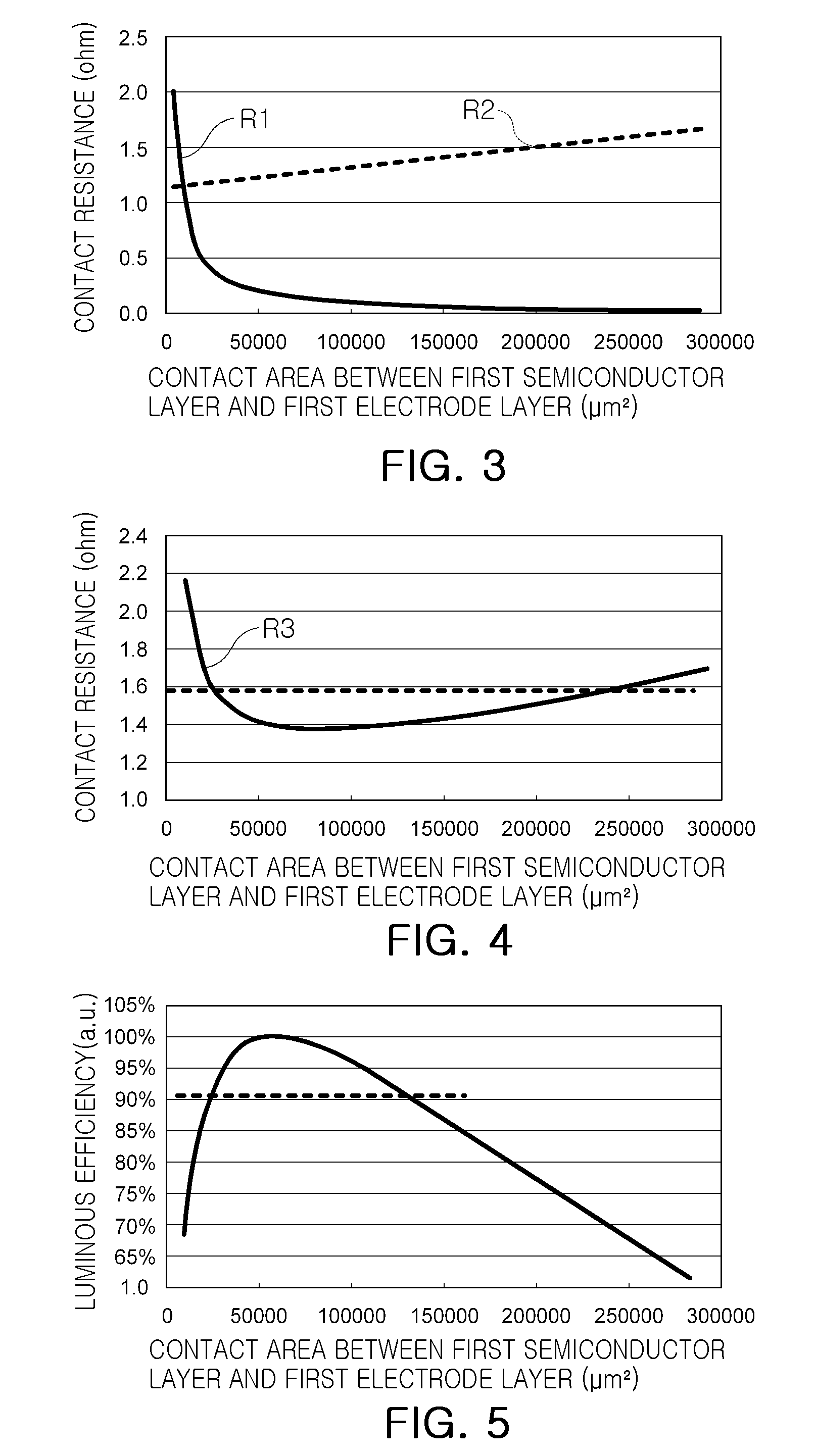Semiconductor light emitting device
a technology of semiconductor light and light emitting device, which is applied in the direction of semiconductor lamp usage, electroluminescent light source, electric lighting source, etc., can solve the problems of nitride semiconductor light emitting device vulnerable to electrostatic discharge, degrade current efficiency, and limit the arrangement of electrodes
- Summary
- Abstract
- Description
- Claims
- Application Information
AI Technical Summary
Benefits of technology
Problems solved by technology
Method used
Image
Examples
embodiment 1
[0472]SrCO3, SiO2, Eu2O3, and Si3N4 as the source materials were mixed with an ethanol solvent at a stoichiometric ratio by using a ball mill. Using a drier, the ethanol solvent was volatilized from the source-material-containing mixture. The dried source-material-containing mixture was filled into the boron nitride furnace. The boron nitride furnace where the source-material-containing mixture was filled was inserted into a heating furnace, and an (Sr, M)2SiO4-xNy:Eu phosphor was manufactured by performing a sintering process in a gaseous state of an N2 atmosphere at a temperature of 1,600° C. for 10 hours. At this time, the base crystal structure of the (Sr, M)2SiO4-xNy:Eu phosphor is Sr2SiO4, and the composition of the host material may be changed by replacing strontium with the metal element M. FIGS. 127 through 129 illustrate the emission spectrum, the XRD spectrum, and the EDX component analysis result of the (Sr, M)2SiO4-xNy:Eu phosphor, respectively. The red phosphor exhibit...
embodiments 2 and 3
[0473]The (Sr, M)2SiO4-xNy:Eu phosphor was manufactured in the same manner as described in embodiment 1, except that an addition amount of nitrogen was changed. FIGS. 130 and 131 illustrate the emission spectrum and the EDX component analysis result of the (Sr, M)2SiO4-xNy:Eu phosphor when an excitation light source having a wavelength range of 200-500 nm was used. As can be seen from FIGS. 130 and 131, the graph {circle around (2)} shows the emission spectrum when At % of oxygen:nitrogen was 56.82:4.85 (x=0.43) (embodiment 2), and the graph {circle around (3)} shows the emission spectrum when At % of oxygen:nitrogen was 42.91:25 (x=1.86) (embodiment 3). When the value of replacing oxygen with nitrogen was x=0.43, the peak emission of the embodiment 2 was 610 nm. When x=1.86, the peak emission of the embodiment 3 was 620 nm. That is, as the addition amount of nitrogen increased, the peak emission of the (Sr, M)2SiO4-xNy:Eu phosphor manufactured herein had a longer wavelength.
embodiments 4 through 6
[0474]The (Sr, M)2SiO4-xNy:Eu phosphor was manufactured in the same manner as described in embodiment 1, except that an addition amount (z) of europium (Eu) was increased from 0.04 to 0.06 by units of 0.01. At this time, the red phosphor is expressed as the composition of EuzSr2-xSiO4-xSiO4-xNy. Europium (Eu) was replaced with strontium and the red phosphor acts as the main light emitting element. FIG. 132 illustrates the emission spectrum of the (Sr, M)2-xSiO4-xNy:Euz phosphor when the wavelength range of 200-500 nm was used as the excitation light source. As can be seen from FIG. 132, the graphs {circle around (3)}, {circle around (4)} and {circle around (5)} illustrate the emission spectrums when z=0.04 (embodiment 4), z=0.05 (embodiment 5), and z=0.06 (embodiment 6), respectively. The peak emission of embodiment 4 was 610 nm; the peak emission of embodiment 5 was 612 nm; and the peak emission of the embodiment 6 was 614 nm. That is, as the addition amount of europium (Eu) increa...
PUM
 Login to View More
Login to View More Abstract
Description
Claims
Application Information
 Login to View More
Login to View More - Generate Ideas
- Intellectual Property
- Life Sciences
- Materials
- Tech Scout
- Unparalleled Data Quality
- Higher Quality Content
- 60% Fewer Hallucinations
Browse by: Latest US Patents, China's latest patents, Technical Efficacy Thesaurus, Application Domain, Technology Topic, Popular Technical Reports.
© 2025 PatSnap. All rights reserved.Legal|Privacy policy|Modern Slavery Act Transparency Statement|Sitemap|About US| Contact US: help@patsnap.com



